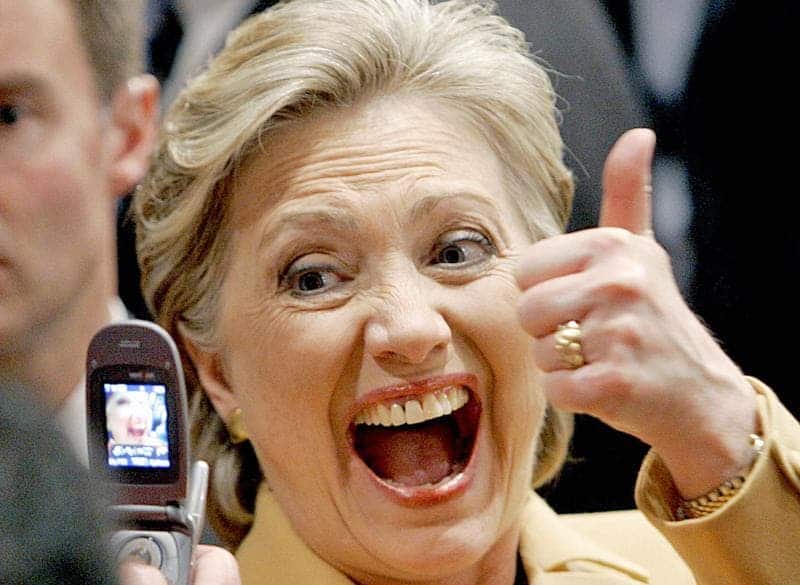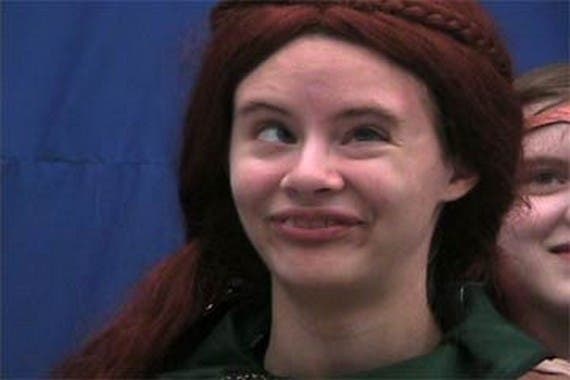Let’s face it: if you’re not a rare photogenic beauty or if you don’t have good photographers as friends, you most likely look terrible in photos. But does that mean you’re ugly? If so, why is it that you look so much better in the mirror?

The person you see in the mirror often doesn’t seem to match the one in the photo. It’s not because your mirror or camera is faulty—it’s because of the interplay between perception, perspective, and the brain.
A camera lens is not like the human eye
Your eyes capture the visual essence of the outside world. Simply closing your eyes and imagining what it would be like to be blind is terrifying in and of itself. But have you ever thought about what it would be like to live with only one eye?
When we try to focus our view on something really small or far away, we close one of our eyes. However, there’s something missing when we utilize this technique — it’s the stereo vision!
Human eyes come in twos, but unlike horses which have one on each side, we have both of them right in front of our heads. Thanks to the close side-by-side positioning, each eye takes a view of the same area from a slightly different angle.
The two separate views have plenty in common, but they also complement each other — each eye picks up visual information the other doesn’t. You can easily see what I’m talking about by closing each of your eyes for a second and then comparing the views. The brain also ignores the nose — which would have been a drag to always see for the rest of your life. Thank you, brain!
Both images are combined after processing occurs in the brain. The small differences between the two images add up to a big difference in the final picture! The combined image is more than the sum of its parts: it is a three-dimensional stereo picture.
The main point here is that we see in 3-D. A camera has only “one eye”, so photography flattens images in a way that mirrors do not.
Also, depending on the focal length and distance from the subject, the lens can create unflattering geometric distortions. For instance, if a photo is taken with a short focal length (zoomed out) and at the same time the subject is also close to the camera, then you’ll get a fisheye lens effect that skews the portrait, making the nose and forehead look bigger.
A good photographer knows he needs to position himself farther away and then zoom in if needed. Indeed, this amplifies the shaking effect, but keeping the camera still using a tripod does the job.
This camera distortion is especially noticeable in selfies. When you hold your phone close to your face, it’s akin to looking in a funhouse mirror—everything is out of proportion. In contrast, your mirror at home provides a much more consistent (and flattering) image, since it reflects light off you in straight lines, unlike a camera lens.
Symmetry
Then there’s another factor – unless your face is perfectly symmetrical, people will see it differently than you do in a mirror. This is because mirror images are reversed, as opposed to what photos capture and what others see. See these two photos of Abe Lincoln below to get an idea of what this means:
Also, when looking at yourself in the mirror, you have the advantage of always correcting the angle in real-time. Unconsciously, you’ll always look at yourself from a good angle. In contrast, photos always seem to catch you at a bad angle. Everybody, no matter how unflattering they might look, has a good (or at least, better) side.
Flash ruins everything
When you look at a real-life object, you have the advantage of automatically compensating for lighting as your eyes adjust to see better, while your brain also processes the image for the best contrast.
When mental calibration is absent, a photo will often turn out with shades and lights that not only look unnatural but also unflattering as well.
Things get a lot worse in the dark when you need to turn the flash on. The flash makes the skin look shiny and greasy and sharpens the edges of your face, making you look like a polygon troll.
For your best pose, try to take photos outdoors under natural lighting. In fact, according to OK Cupid, a camera’s flash adds seven years to your perceived age.
Fake smiles make you look weird
“Say cheese!” Oh, boy, that always ruins it. Really, whenever I have to ‘pose’ for a photo, I always wind up looking like I’m about to get my driver’s license. If someone tells you to smile for a photo, don’t do it. The best smile is effortless.
Just stay as relaxed as possible, so your facial muscles won’t grind into an unnatural and unflattering pose. It’s just a photo — there’s no need to become too self-conscious about it. It’s best to keep your eyes open and chin up. This will get rid of double chin, up-the-nose shots, asymmetry caused by muscles twitching in the face, and shoulders pulled all the up to your ears. Most importantly, it will make you focus on something other than your horrible photographic past.
The first shot is not the best usually
Tests with Air Force pilots have shown that they could identify a plane in a picture that was only shown for 1/220th of a second. While most of us aren’t fighter jet pilots, we’re capable of distinguishing between minute differences in highly succeeding frames.
As far as people are concerned, however, the brain doesn’t pay attention to each individual facial expression that arises from moment to moment. Instead, the brain averages these out and discards momentary deviations, so when you’re talking to another person you’re actually looking at a corrected, fluid representation of that person’s face.
Imagine consciously noticing every twitch of an eye or facial muscle, with hundreds of these every second. Thank you, brain!
A camera is a lot different though. It freezes a sub-second instant in time, complete with all the deformity you wouldn’t notice in average mode.
Push the shutter multiple times, and choose your best photos. Good photographers might take even hundreds of photos before settling on the perfect one.
Your brain is playing tricks on you
Lastly, our brains play a critical role in how we perceive ourselves. Known as the ‘mere-exposure effect’, we tend to develop a preference for things merely because we are familiar with them. This includes the mirror image of ourselves. As a result, when we see a picture that contradicts our established self-image, our brain rejects it.
Moreover, our brains are excellent at filtering out perceived flaws when we look in the mirror. This is part of a protective psychological mechanism to maintain a positive self-image. But in photos, these ‘flaws’ are permanently captured, and our brains cannot filter them out.
Stop comparing yourself to enhanced photos

Another way why photos make you look ugly is by comparison. As I pointed out above, we’re used to seeing faces in real life that are moving in a fluid manner. But you are also exposed to hundreds of photos on a daily basis on social media, most of which are highly retouched. There’s a reason why these posts have a lot of likes and show up in your feed in the first place.
When you look at these highly enhanced photos showing gorgeous-looking people, you’ll automatically compare them in your head with your own photos. I know it’s hard, but please stop comparing. You’ll just end up down the AI filter rabbit hole otherwise — and trust me, you don’t want to go there.
Perhaps the most important takeaway is this: Whether in a mirror or a photo, you are you. Neither reflection nor photograph defines your worth or value. They are merely different perspectives of the same person. In the end, the best image of you is the one that you carry within. Embrace that image above all others.






